Trujillo was named by Pizarro himself, calling it after his own birthplace in Spain. The town retains a lot of attractive colonial buildings around the main square and throughout the historical centre. But its chief attraction to travellers are some remnants of the old civilisations that flourished on the banks of the nearby Rio Moche long before Inca times.
These have been relatively recently discovered (some by grave robbers in the 1990s). Over years the adobe structures had crumbled and slumped, then becoming covered by the shifting desert sands leaving just the vaguest outline of what lie beneath. Now that excavation and restoration have begun in earnest there are some very impressive remains, although they only represent a small fraction of what once was there.
Our first visit was to Las Huacas del Sol y de la Luna, which are temples that were constructed by the Moche people around 500AD (although evidence has been found of even earlier civilisations in the same locations). They are essentially pyramid type structures although they contain lots of chambers and open and covered patios. Although constructed of adobe bricks, many of the surfaces were adorned with reliefs of patterns and of animals that were painted in bright colours.
They were obviously big DIY fans and periodically decided to redecorate the walls but rather than just giving them another lick of paint, they constructed new walls around the outside, burying the old decoration. So it is that archaeologists are now able to dig the building out of the sand, pare back the outer layers and find the inner decoration in remarkably good condition.
It's impressive that this means we are able to look directly at the unrestored decorative scheme that was painted 1500 years ago. There is still lots of excavation going on at the site with substantial continuing support from one of the county's biggest beer groups. So the organisation is pretty good with lots of shades being erected to protect the murals and reliefs from further damage.
A byproduct of all this restoration work is that the original adobe bricks have been separated and the archaeologists have found maker's marks on each brick showing that over 100 different makers contributed to the building.
The Moche people appear to have been a rather bloodthirsty lot and the Moon Temple was used almost exclusively for all the necessary preparation and undertaking of ritual human sacrifices.
The pyramid is built up against some white rocks that were the symbolic centre of the sacrifice system and probably related to a worship of nature including rocks, the moon and the sun. All around the temple we can see what seems to be their chief deity Ai-Aipaec with his fierce face, boggle eyes and vicious looking fangs.
The chief facade of one of the main courtyards is decorated with a series of friezes showing different mythical and symbolic creatures, many showing graphic evidence of their large sharp knives and beheadings. At a lower level, some preparation rooms were decorated with larger murals, chiefly portraying battles and disorder; they seem to have had a deep seated fear of being attacked.
The ramp to take victims up to be killed took them past the pictures on a journey that showed their fate more graphically as they went up.
Not far away, and originally linked to the Moon Temple by a wide roadway and cultivated land that represented the whole of the complex, the considerably larger Sun Temple pyramid is Peru's largest pre-Colombian structure with an estimated 140 million adobe bricks.
Originally there were several levels connected by steep stairs and it contains twice as many rooms as the Moon Temple. However, in 1602 the Spanish got it into their heads that it might contain a lot of treasure so they diverted the nearby river to wash against and erode the pyramid. This washed away a lot of the structure but they seem to have only found bricks.
As a result of this and further degeneration over time, only about 30% of the original building remains although it is still pretty big. However, although restoration work is currently being done, it remains too unstable to be visited at present.
The following day we went out to visit the Chan Chan complex which is a huge ruined city that spreads from the outskirts of Trujillo almost to Huanchaco, around 12 kilometers away.
This was the capital city of the Chimu Empire, which occupied the coastal areas of northern Peru and dates from around 1100AD. There are no records of how the city began but legend suggests that the creator deity, a dragon who made the sun and the moon and whose earthly manifestation is the rainbow, had something to do with it. Seems likely. We do know that it was a rigidly structured and rule bound society with large numbers of slave workers supporting a much smaller number of artisans and courtiers. The city was elaborately planned with large buildings for the nobility and decorated adobe pyramid temples. Only a few sections of the city remain and the largest is the Tschudi temple-citadel, which now seems to have been renamed Palacio Nik-An.
Whereas the Huaca del Luna had been preserved but not restored, large sections of this complex has been very much rebuilt or stabilised. We caught a local bus and walked the last couple of kilometres from the road.
A friendly man on the bus admired Tony's tattoos, discussed the demise of Leeds United with him and gave lots of advice on how much fare we should be paying, where to get off and how to continue our journey on the small beach town down the road later in the day (while Jenny worried that this may be part of some organised mugging scheme). He knew the area well, he told us, as he used to be a grave robber!
Walking down the track towards the remains, we first reached a huge enclosing wall, alongside which was a sign showing how the wall looked pre-restoration (which was largely like a big heap of sand).
The entrance into the citadel brought us into an immense ceremonial courtyard, each wall having a wide border of squirrel-like creatures around the base. The whole city is a maze of corridors, chambers and amazingly large plazas. Many of the walls were decorated with relief borders of fishing nets, fish and bird motifs which would originally have been painted.
There were odd patches of faded evidence of paintwork, but we had to look hard. These walls have obviously been much more exposed to the elements, and generally still are. One courtyard, believed to be a council chamber, has niches set into the walls, each big enough for a person to sit in. Apparently if from your niche you whisper to someone in another niche, the chamber has an unusual acoustic effect, amplifying the sound.
Unfortunately you're not allowed to try it out for yourself any more so we'll have to take their word for it. Although the primary purposes of this part of the city were administrative and military, there were also a couple of ceremonial plazas where odd folk would be led up the ramp and decapitated.
Of course, no city would be complete without some sort of graveyard and this one had a special area set aside for the important men of the community who would, it seems, be buried with their concubines. It's not clear to us whether the concubines were buried dead or alive, but I guess either way it wasn't a pleasant end for her.
From the palace / temple area we could hear the sound of the sea. Tempting as it was to walk along the coast or to wander through the kilometres of undeveloped ruins, we decided to take the advice of the guide book (ie don't do it!) and walked back to the road to catch a combi bus to Huanchaco, the next small town. Glad to say, we didn't get mugged by ex-grave-robbers, or anyone else!
Huanchaco was a refreshing break from culture: sand, sea and lots of local people enjoying themselves (it's Easter weekend). So we had beer, a plate of chicharrones (bits of fried fish served with a fiery sauce) to share and a stroll along the seafront...
Sun worshipping through the years
Sunday, April 04, 2010
 Trujillo, La Libertad, Peru
Trujillo, La Libertad, Peru
Other Entries
-
81Mountains, lakes, salt plains & altitude sickness
Feb 0855 days prior Uyuni, Boliviaphoto_camera82videocam 1comment 5
Uyuni, Boliviaphoto_camera82videocam 1comment 5 -
82Dead people, dead trains and dead electrics!
Feb 1053 days prior Uyuni, Boliviaphoto_camera30videocam 0comment 3
Uyuni, Boliviaphoto_camera30videocam 0comment 3 -
83Let the festivities begin (but not in the convent)
Feb 1350 days prior Potosi, Boliviaphoto_camera78videocam 0comment 0
Potosi, Boliviaphoto_camera78videocam 0comment 0 -
84No sugar but lots of water and... dinosaurs!
Feb 1944 days prior Sucre, Boliviaphoto_camera61videocam 0comment 5
Sucre, Boliviaphoto_camera61videocam 0comment 5 -
85Possibly the highest capital city in the world...
Feb 2340 days prior La Paz, Boliviaphoto_camera89videocam 1comment 4
La Paz, Boliviaphoto_camera89videocam 1comment 4 -
86Shining Lake Titicaca (when it isn't raining).
Feb 2637 days prior Copacabana, Boliviaphoto_camera47videocam 1comment 2
Copacabana, Boliviaphoto_camera47videocam 1comment 2 -
87Despite the name, it's not always sunny here!
Feb 2835 days prior Isla del Sol, Boliviaphoto_camera51videocam 0comment 0
Isla del Sol, Boliviaphoto_camera51videocam 0comment 0 -
88Incas, Pre-incas and a load of willies.
Mar 0530 days prior Puno, Peruphoto_camera113videocam 0comment 0
Puno, Peruphoto_camera113videocam 0comment 0 -
89Road blocks, demos and a scenic journey to Cusco
Mar 0629 days prior Cusco, Peruphoto_camera76videocam 0comment 5
Cusco, Peruphoto_camera76videocam 0comment 5 -
90Touring the Sacred Valley
Mar 0728 days prior Ollantaytambo, Peruphoto_camera50videocam 0comment 8
Ollantaytambo, Peruphoto_camera50videocam 0comment 8 -
91Visiting the Inca sites around the city.
Mar 0926 days prior Cusco, Peruphoto_camera46videocam 0comment 3
Cusco, Peruphoto_camera46videocam 0comment 3 -
92The White City
Mar 1619 days prior Arequipa, Peruphoto_camera92videocam 0comment 2
Arequipa, Peruphoto_camera92videocam 0comment 2 -
93Strange markings at Dead Bull!
Mar 2312 days prior Toro Muerto, Peruphoto_camera32videocam 0comment 0
Toro Muerto, Peruphoto_camera32videocam 0comment 0 -
94Colca Canyon 1: Snow and the Ice Maiden
Mar 2510 days prior Chivay, Peruphoto_camera17videocam 0comment 2
Chivay, Peruphoto_camera17videocam 0comment 2 -
95Colca Canyon 2: Watch out, condors about!
Mar 278 days prior Cabanaconde, Peruphoto_camera56videocam 1comment 1
Cabanaconde, Peruphoto_camera56videocam 1comment 1 -
96Colca Canyon 3: Hot and Passionate
Mar 287 days prior Arequipa, Peruphoto_camera21videocam 0comment 0
Arequipa, Peruphoto_camera21videocam 0comment 0 -
97More lines and symbols but this time they're BIG!
Mar 314 days prior Nazca, Peruphoto_camera41videocam 0comment 2
Nazca, Peruphoto_camera41videocam 0comment 2 -
98Sun worshipping through the years
Apr 04 Trujillo, Peruphoto_camera62videocam 0comment 2
Trujillo, Peruphoto_camera62videocam 0comment 2 -
99We go in search of GOLD!
Apr 073 days later Chiclayo, Peruphoto_camera58videocam 0comment 4
Chiclayo, Peruphoto_camera58videocam 0comment 4 -
100Sun, surf and a very loud children's fairground
Apr 117 days later Máncora, Peruphoto_camera22videocam 0comment 3
Máncora, Peruphoto_camera22videocam 0comment 3 -
101In search of exotic animals: we find iguanas
Apr 139 days later Guayaquil, Ecuadorphoto_camera21videocam 0comment 1
Guayaquil, Ecuadorphoto_camera21videocam 0comment 1 -
102We arrive and dive.
Apr 1612 days later Puerto Ayora, Ecuadorphoto_camera64videocam 2comment 1
Puerto Ayora, Ecuadorphoto_camera64videocam 2comment 1 -
103We set sail, eventually.
Apr 1713 days later Bartoleme, Ecuadorphoto_camera46videocam 0comment 4
Bartoleme, Ecuadorphoto_camera46videocam 0comment 4 -
104Iguanas in all their many forms.
Apr 1814 days later Santa Fe Island, Ecuadorphoto_camera32videocam 0comment 3
Santa Fe Island, Ecuadorphoto_camera32videocam 0comment 3 -
105Not all the animals here are friendly.
Apr 1915 days later San Cristobal, Ecuadorphoto_camera8videocam 0comment 1
San Cristobal, Ecuadorphoto_camera8videocam 0comment 1 -
106Albatross, fresh albatross!
Apr 2016 days later Espanola, Ecuadorphoto_camera29videocam 0comment 1
Espanola, Ecuadorphoto_camera29videocam 0comment 1 -
107Jen has mixed feelings about stingrays!
Apr 2117 days later Floreana, Ecuadorphoto_camera11videocam 0comment 1
Floreana, Ecuadorphoto_camera11videocam 0comment 1 -
108That's the way, A-a A-a, I like it!
Apr 2218 days later Isabela, Ecuadorphoto_camera25videocam 1comment 2
Isabela, Ecuadorphoto_camera25videocam 1comment 2 -
109Big Boy Diego struts his stuff and we fly out.
Apr 2319 days later Puerto Ayora, Ecuadorphoto_camera10videocam 0comment 1
Puerto Ayora, Ecuadorphoto_camera10videocam 0comment 1 -
110In the dangerous city we have too many cocktails
Apr 2521 days later Quito, Ecuadorphoto_camera31videocam 0comment 2
Quito, Ecuadorphoto_camera31videocam 0comment 2 -
111We look for the Virgin on the Rocks.
Apr 2622 days later Ipiales, Colombiaphoto_camera22videocam 0comment 0
Ipiales, Colombiaphoto_camera22videocam 0comment 0 -
112A bright white city with a great dark bar.
Apr 2925 days later Popayan, Colombiaphoto_camera31videocam 0comment 0
Popayan, Colombiaphoto_camera31videocam 0comment 0 -
113We avoid hot spots and enjoy suburban life.
May 0228 days later Medellin, Colombiaphoto_camera34videocam 1comment 0
Medellin, Colombiaphoto_camera34videocam 1comment 0 -
114Nobody expects the Spanish Inquisition...
May 0531 days later Cartagena, Colombiaphoto_camera26videocam 0comment 3
Cartagena, Colombiaphoto_camera26videocam 0comment 3 -
115Traditional fishing village or party-goers heaven?
May 1036 days later Taganga, Colombiaphoto_camera16videocam 1comment 4
Taganga, Colombiaphoto_camera16videocam 1comment 4 -
116Hotel of the Snows in another white city
May 1238 days later Girón, Colombiaphoto_camera19videocam 0comment 0
Girón, Colombiaphoto_camera19videocam 0comment 0
Comments
2025-05-22
Comment code: Ask author if the code is blank

 Trujillo, La Libertad, Peru
Trujillo, La Libertad, Peru
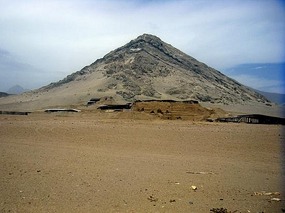

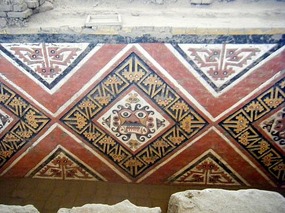
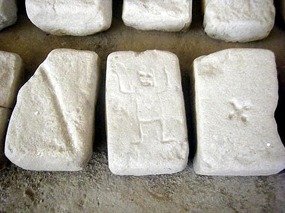
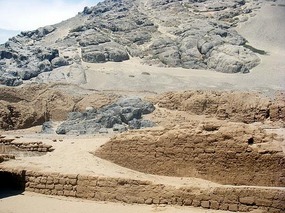

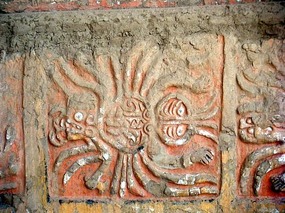
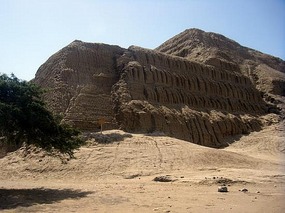
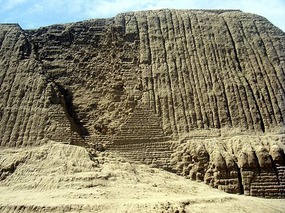
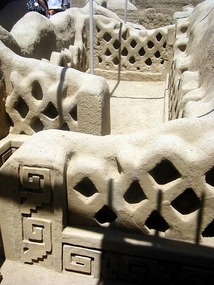
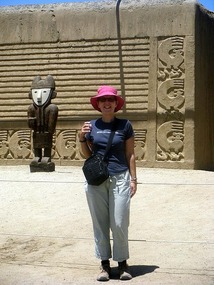
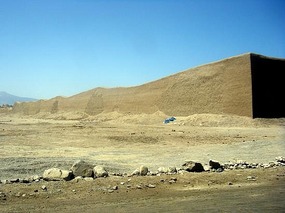
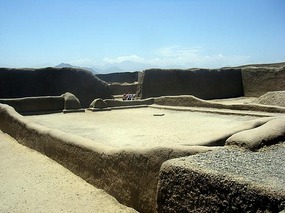

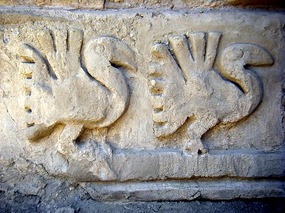
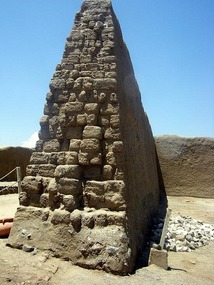
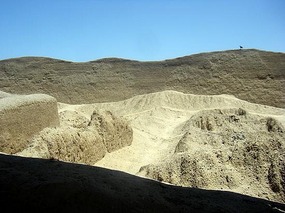




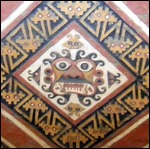
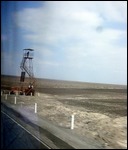


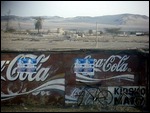
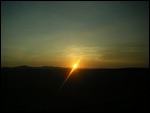
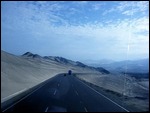
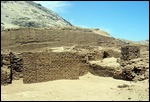
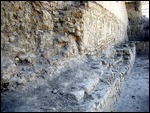
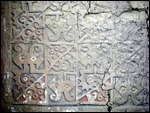
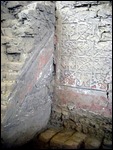

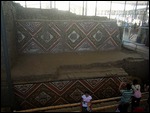
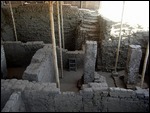
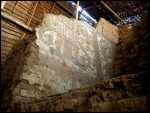
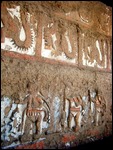
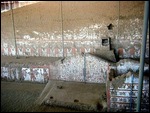
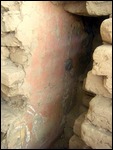
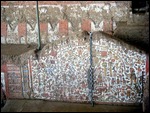
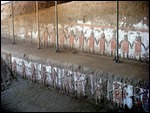
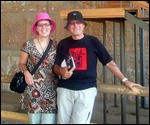
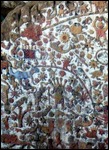
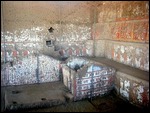
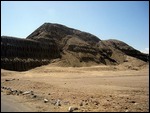
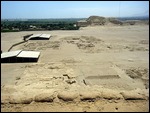
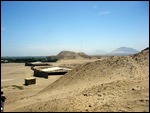
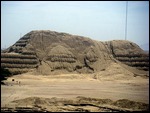
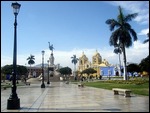
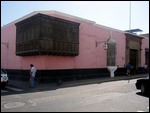
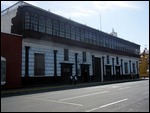
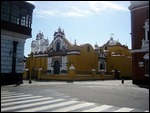
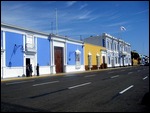
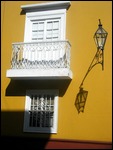
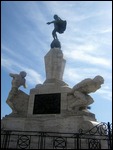
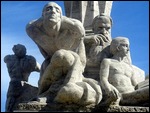
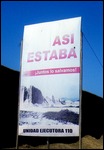

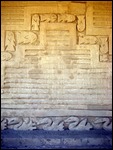
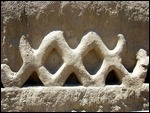
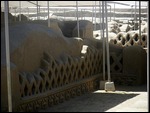
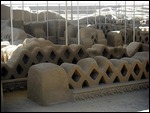
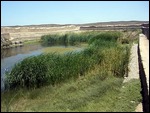

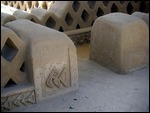
dozyrosie
2010-04-09
Sounds like a night out at Dougs at the end of the week!
jenandtony
2010-04-09
Not very much different and we're hoping to fit in a trip to the Sandgate adobe pyramids on our next trip to Deagon